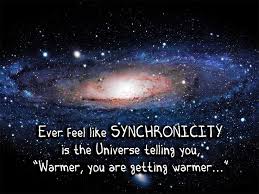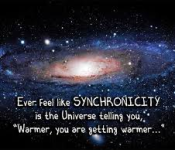Do Humans Seek and Create Meaning (Part 2)?
How Patterns May Play a Part When Humans Seek to Create Meaning
According to Mezirow (1990), to understand is to perceive patterns. Expectations are part of human nature to exercise potential in everyday connections within conditions and circumstances that make sense. Feinstein and Krippner (2006), explain: Freedom has been defined as the “state of mind you enjoy when you are aware of choice and have the power to choose.” Both your awareness of choice and your power to choose can be enhanced if you recognize undesirable patterns in your life that are being supported by habitual, insidious guiding myths (pp. 49-50).
In this sense “myths” are “the vibrant infrastructure that informs your life” (Singer, 2006, p. xvii). John Dewey perceived habit as a construction of experience which allows individuals to make sense of a circumstance. This conscious awareness is considered as a possibility motivated by learned habits through participation (Anderson, 2014). “Phenomenologically, the meaningfulness of present experience is an activity of habit, a ‘tension’ between habitual grooves of sensitivity and the world, through which self and environment are simultaneously transformed” (Ostrow, 1987, p. 214-216). Trusting, appreciating, sensing, thinking, and emotions are influenced by these patterns in the process of distinguishing the meaning of things and experiences. It is the result of an active collaboration between habit, interpretation, and reflection. One may not even remember what they have learned, were exposed to or came to understand, but can still be deeply influenced by meaning, patterns and perceptions. Individuals may interchange truth, reality, and reasoning for a reprieve from the angst and foreboding created when the experience does not happily fit these meaning constructs (Goleman, 2006). Patterns create a definitive picture of one’s world which can help individuals to understand the meaning of things within a design. Patterns embody something greater that runs through all things and are part of the process which explains how the universe works and can be a vital source for solving life’s most remarkable difficulties (Sarokin, 2013).
Feinstein and Krippner clarify how patterns play a significant role in development:
As your brain creates explanations and envisions courses of action, networks of neurons are linked and begin to operate as the units that encode such beliefs and plans. Through repetition, these networks become more stable and connect with other networks into increasingly complex systems of explanation and guidance. Established networks of neurons maintain consistent patterns, yet like the film frames that make up a movie, each moment is also a new creation. Damasio explains, for instance, that one’s sense of self is “a repeatedly reconstructed biological state,” constructed moment by moment, from the ground up, “so continuously and consistently reconstructed that the owner never knows it is being remade unless something goes wrong with the remaking” (p. 257). In the grander scheme of things, correlations within the big picture may reveal the vital importance of understanding patterns and where cultures, countries and the world are headed. Maybe understanding life can be found if researchers see a relationship between humans and the cosmos, leading to better control over outcomes based on universal laws.
Ackerman states (as cited by Beitman, 2009):
Pattern pleases us, rewards a mind seduced and yet exhausted by complexity. We crave pattern, and find it all around us, in petals, sand dunes, pine cones, contrails. Our buildings, our symphonies, our clothing, our societies — all declare patterns. Even our actions: habits, rules, codes of honor, sports, traditions — we have many names for patterns of conduct. They reassure us that life is orderly (p. 256).
According to Luukkonen, Persson, and Sivertsen (1992), understanding patterns may be of aid when comparing international collaboration in scientific fields. In their study. “Attention is drawn to cognitive, social, historical, geopolitical, and economic factors as potential determinants of the observed patterns” (p.101). The study gave greater insight to the advantages of examining the tendencies of different countries to collaborate internationally.
Synchronicity as an Alignment with Patterns and Meaning
Supporting a theory that human beings seek to create meaning, Jung postulated that synchronicity may carry insight into describing why events that are not causally linked occur at the same time (Jung, Hull, & Shamdasani, 2010).
McCauley (2005) states:
When we are engaging in our life purpose, synchronicities will occur to direct and even facilitate our purpose according to our lesson of synchronicity. We need to practice paying attention to synchronicities as they occur. Since one of the components of synchronicity is meaning, we must expend some mental effort at times in order to understand the meaning behind the synchronicity. When we are aware of synchronicities in our life, we gain a glimpse into the very fabric of the Universe. We notice them when they occur, and we attempt to understand their meaning or their message (p. 210).
This interpretation of relationship and connection with the patterns may help individuals to become more conversant and be in agreement with their true purpose, further developing the evolution of the human species (Dobzhansky, 2013). As cited by Sperry (2007), Jung defined synchronicity as “the simultaneous occurrence of a certain psychic state with one or more external events which appear as meaningful parallels to the momentary subjective state” (p. 2). According to Kaplan (2007), synchronicities are additionally linked to life-changing, and profoundly spiritual encounters and can play a vital part in a person’s development and individual transformation. Some synchronicities have involved happenings believed to be supernatural. Synchronicity is a means or agent that carries and communicates hidden messages through patterns of coincidence. These patterns can have personal meaning to an individual experiencing the coincidence. The interpretation of the messages is influenced by the observations and insights of the person’s memories, experiences, and view of reality.
Sacco (2016) presented a conceivable method of explaining synchronicity. Jung hypothesized that because these extraordinary events are so random they cannot be measured. Sacco used a new method of measurement, called the Fibonacci Life-Chart Method (FLCM). This method “categorizes phase transitions and Phi fractal scaling in human development based on the occurrence of Fibonacci numbers in biological cell division and self-organizing systems” (p. 203). The FLCM suggested an emphasis concerning the psychological experience of the individual which may relate to Jung’s theory of synchronicity. Sacco intimated that these connections are innately meaningful instead of results of cause and effect relationships. Synchronicity here is displayed as a self-organizing system.
Roxburgh, Ridgway and Roe (2015) also investigated synchronicity experiences (SEs). They saw these meaningful associations as events occurring through vision, thought, or dream, with one or more events occurring outside of the individual at the same time or sometime in the future. Their research explored the development and type of synchronistic experiences in therapy from a practitioner’s viewpoint. Roxburgh et al., (2015) utilized semi-structured face-to-face interviews with nine therapists. This study centered on how participants made sense of synchronistic experiences in their therapy sessions. These results supported that SEs can help to strengthen the therapeutic relationship.
Roxburgh et al., (2015) stated:
Findings suggest that SEs can serve to strengthen the therapeutic relationship and are perceived as useful harbingers of information about the therapeutic process, as well as being a means of overcoming communication difficulties, as they are seen to provide insights into the client’s experiencing of themselves and others, regardless of whether or not the SE is acknowledged by the client or disclosed by the therapist (p. 144).
It may be suggested that synchronicity is a way to communicate with an expanded sense of meaning. “Spirituality encourages and engages in the sharing of collective and personal experiences of understanding and dealing with the self” (Kincheloe & Horn, 2007, p. 660).
About the Author
For over 15 years, John Cane, MA has helped over 100,000 individuals in areas of Self Improvement. John is a Life Coach, motivational speaker and writer who develops and implements confidence and self-esteem workshops in Baltimore, Florida, Georgia, Illinois, New York, North Carolina, South Carolina, and Virginia. With a background in Psychology, he has six certifications in Personal Growth and Development. His Journal Books, ‘Important Things I Remember from My Parents’ are used in schools and as an aid for adults in gaining strength in self identity in the United States and Europe.
John Cane is the founder of Edge Advantage, Inc. Edge Advantage is a personal development organization dedicated to research-based, practical psychology training. Our focus is on communication, individual performance, and reducing stress. The objective of John’s websites is to bring the most current developments from these areas to those who use them every day, educating in a form that is clear and practical. John is also the webmaster of Self Help Guides Online (.com) and See the Obvious (.com). He is currently pursuing a Doctorate in Psychology at Saybrook University, Oakland, California. His specialization, Psychology of Creativity Studies focuses on finding ways for individuals to experience their potential and realize personal success. John also works with organizations implementing innovative strategies through a systems perspective.






